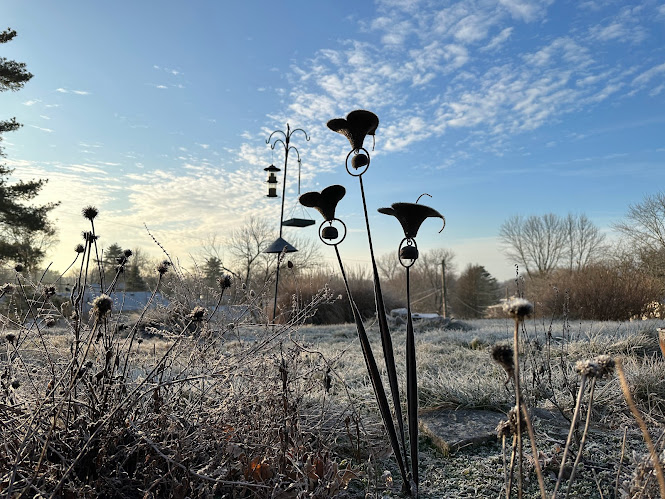11-14-2022 It was a hard call to make, but Linda is back in the hospital
(Tricia)
When Linda became unresponsive last Friday, we weren't sure what to do. On the one hand, when she wasn't waking up, we knew something was obviously very wrong. But on the other, we knew that if she had still been on hospice, we would not be taking her to the hospital to be treated. We would just let whatever it was run its course. It is one of the most difficult aspects of this very difficult situation: How much is too much? When is enough enough?
I know there is a reasonable argument for not putting Linda through more treatments. But where I struggle is when the "treatment" is something relatively simple--an antibiotic for infection, for example. I often don't know what the right thing is to do. When we're talking about caring for someone in a fragile state (and, to be honest, someone reaching end-of-life care), each decision is especially harrowing. I guess that reality, though, means that there are really few "right" or "wrong" decisions under these circumstances. There are simply decisions to be made, one way or another.
This time, when she once again became lethargic and unresponsive yesterday (Sunday), her doctor recommended getting her to the ER. I had to really weigh the costs versus the benefits of having her taken to the hospital. In the end, I decided to call for an ambulance and have her transported to St. Luke's Hospital (where this all began in St. Louis more than a year ago! Wish I had just stuck with this hospital the whole time). My reasoning was that if it was something simple to treat, it would be worth going; if it was something too complex to treat, at least we could take her home again with full knowledge of what was going on.
We spent about 5 hours in the ER yesterday before Linda was taken up to a hospital room--and then another three hours until the doctor on call for that floor decided that Linda would be better cared for in the ICU. But in all the flurry of activity, the tests came back and revealed that the problem was something simple to treat. It turns out, carbon dioxide had been building up in Linda's blood, causing what's called respiratory acidosis. The CO2 was making her blood too acidic, causing her to go from confused to lethargic to unresponsive. To treat, they put her on a BiPap machine (which is like a CPAP machine except that a BiPap machine forces air both the inhale and exhale, rather than just the inhale). This helped "blow out" the CO2, and her levels began to lower pretty quickly after that. By morning, when Marilyn got here, Linda was awake and trying to tear the darn BiPap mask off her face!
As of this morning, she was off the BiPap machine and back on a regular nose cannula. The doctors are still uncertain about whether she also has a slight case of pneumonia, so they just took her to get a CAT scan. The scan will show them where any fluid is around her lungs and give them a better sense of whether pneumonia is present. They also want to determine whether the drain she had inserted at St. Mary's Hospital back in April is even needed anymore. If not, they'll remove it while she's here.
So, Linda lives to fight another day. :-) In a sense, now that I know that all of this (thankfully) fell into the "simple-to-treat" category, I'm hoping this stay in the hospital will offer a "reset," where she can normalize her breathing, confirm/treat pneumonia or put our minds at ease that she never had it in the first place, and possibly even get that drain removed. I'm also going to see if they can take a look at her knee to see what kind of injury might still be there.
It's likely that she'll be discharged sometime in the next few days. In the meantime, we're back in "hospital" mode, with Marilyn visiting most mornings and me coming in the afternoon. But the difference this time is that I know that there will be no fight at discharge about where she's going or what facilities will accept her. This time, she'll just come back home.
And I have to say, Ed and I are not used to being in a quiet house once again, without Linda's classical music playing, the hum of her low-air mattress bed, the constant whirring of the oxygen concentrator, and of course the comings and goings of caregivers. We had taken that quiet for granted, but now we will fully appreciate it.

Comments
Post a Comment